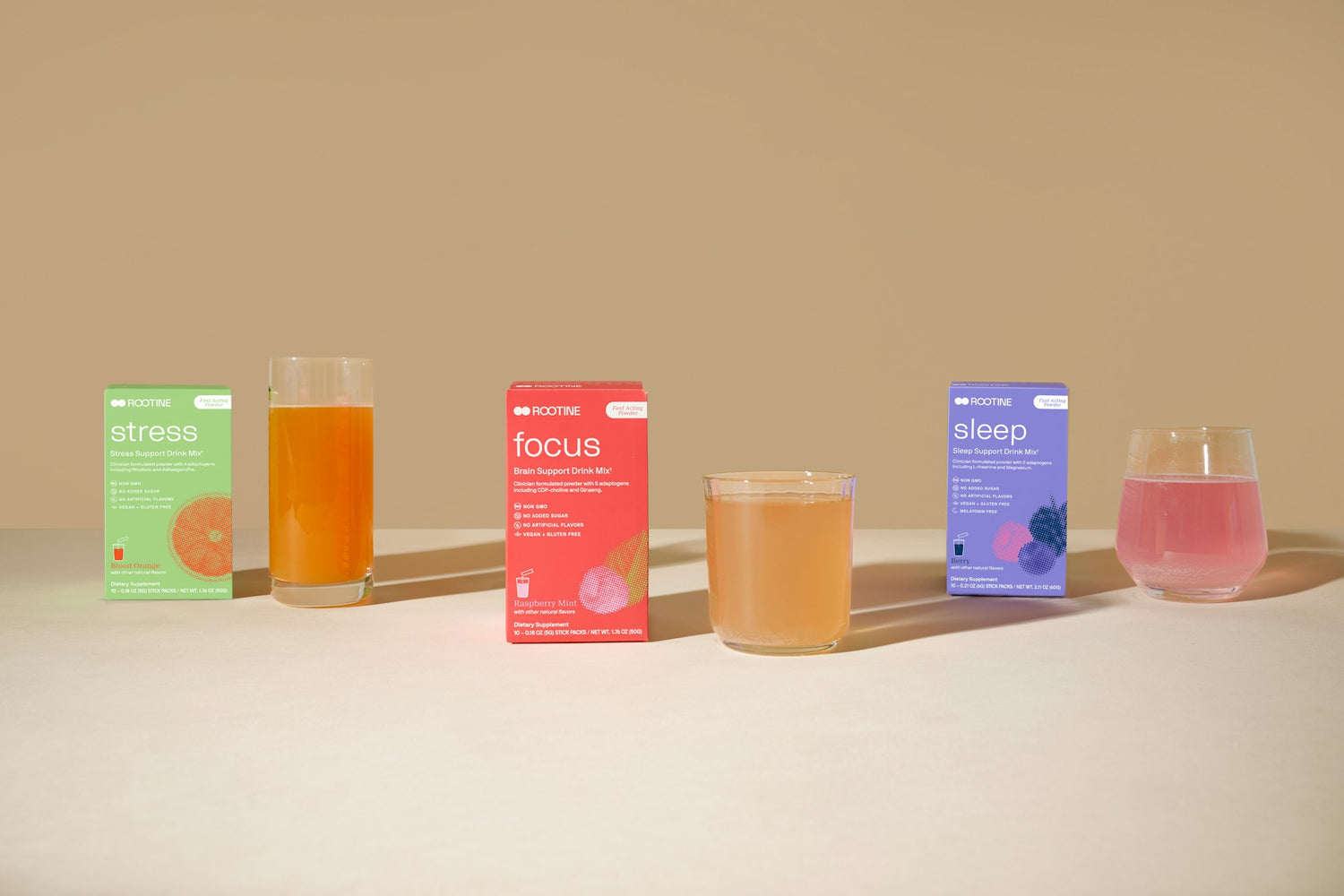...And What Your Genes Have to Do with It!
Your body - when healthy - can be likened to a well-oiled machine, as it works 24/7 to perform all the little tasks that make your existence possible. Nutrients are necessary for the body to function properly, but when it comes to the specifics of this sustenance, no two people are the same. Although there are general guidelines for healthy doses, different people require different amounts of nutrients depending on their lifestyle, genetics, and current blood nutrient levels.
This phenomenon is explored by our resident health analysts here at Rootine, who found that different factors affect your nutritional requirements. Importantly, the differences lie deeper than what you can perceive with the naked eye. Read on to know about the warning signs of nutrient deficiencies and the role that genetics play in determining our nutritional needs:
Vitamin C - Bruising
Vitamin C, also known as ascorbic acid, is a nutrient required for the creation of collagen within the body. Collagen is responsible for making blood vessels, which is why bruising is a potential warning sign of Vitamin C deficiency (source). The recommended Vitamin C intake for adults is anywhere between 65 and 90 mg a day. Do note that the upper limit of Vitamin C intake is at 2,000 mg a day, and intake beyond that can lead to adverse effects such as headaches and nausea.
Interestingly, however, a University Hospital of Ghent study on the link between genetics and Vitamin C intake has found that deficiency may not be just about how much you consume. As it turns out, it's also partly genetic. This is determined by one's haptoglobin phenotype. Haptoglobin is a human protein that has 3 major phenotypes: Hp 1-1, Hp 2-1, and Hp 2-2. Despite sufficient daily intake, people with the Hp 2-2 phenotype were found with significantly lower levels of Vitamin C in their bodies.
Vitamin D - Fatigue and Chronic Pain
Vitamin D is a nutrient that, among other things, helps the body absorb calcium from food and supplements. It also facilitates muscle movement and helps the nerves carry messages between the brain and the body, in addition to playing a role in proper immune system function. The recommended daily intake for this useful vitamin is around 10 to 20 micrograms.
While Vitamin D is commonly associated with bone strength, a study conducted in Turkey has found that people with low Vitamin D blood levels were more likely to complain of fatigue than those with blood levels of 30 ug or higher. Additionally, a genetic variation plays a role in vitamin D requirements. The gene variation associated with Vitamin D is aptly called the Vitamin-D Receptor (VDR or bsml - rs1544410). 11% of the American population is born with a disrupted VDR gene, meaning these people will need around twice as much Vitamin D to meet their regular bodily requirements.
Omega-3 - Dry Skin and Brittle Nails
Heart disease is one of the main causes of death in the United States. One nutrient discussed regulation in regards to cardiovascular health are omega-3 fatty acids. Omega-3 fatty acids are composed of both eicosapentaenoic acid (EPA) and docosahexaenoic acid (DHA), among others. There is no set standard for how much Omega-3 you should get on a daily basis, as it mostly depends on your specific health condition. In generalO a minimum of 250-500 mg of EPA and DHA is a good place to start for full-grown adults but consult with your doctor for the required amount per your specific health requirements. Dry skin and brittle nails are a potential sign of needing more omega-3s in your diet. Conversely, higher omega-3 intake often results in softer and more supple skin.
While you can receive adequateOmega-3 from eating fatty fish a few times per week, there's a genetic factor to consider before potentially upping your intake. Having the normal APOA1 (rs670) gene means taking additional omega-3s may prove beneficial to your health, but if you have the APOA1 gene variation, you may want to reconsider as additional omega-3 intake may actually lower (i.e. worsen) your HDL cholesterol levels.
Folate - Persistent Fatigue and Pale Skin
Folate is an essential nutrient as it is responsible for making DNA and other genetic material present in your body. Your body also needs folate to create new cells, which serve to replace old and damaged ones. The NIH recommends a daily amount of 400 micrograms of folate for adults age 19 and up. Significant folate deficiency can result in the condition of folate-deficiency anemia which is characterized by pale skin and fatigue (source).
While folate is present in a variety of food, such as beef liver, asparagus, and nuts, certain factors can affect the amount that you need. Gene mutations in the MTHFR gene (or methylenetetrahydrofolate reductase) (rs1801133 and rs1801131) have been shown to reduce the body’s ability to utilize dietary folate and folic acid (in supplements and fortified foods), resulting in elevated homocysteine which is a risk factor for heart disease. Healthline details that you can counteract these effects by taking methylated folate, a bioavailable form of folate, so that your body can absorb the nutrients despite the gene mutation.
Rootine takes a targeted approach to folate and folic acid metabolism dependent on genotype to achieve optimal folate status. The Rootine algorithm identifies SNPs and calculates their MTHFR enzyme efficiency impact, and then adds a corresponding dose of folic acid and methylfolate. For example, if SNPs in the MTHFR gene result in a 60% reduction in folate processing efficiency, Rootine adds 40% of the folate RDA as folic acid and 60% of the folate RDA as methylfolate to compensate.
---
Rootine provides the benefits of highly complex cutting-edge science in a simple, easy-to-do customization process. It’s a win-win for members!
Post written by Jennifer Birch for rootinevitamins.com



